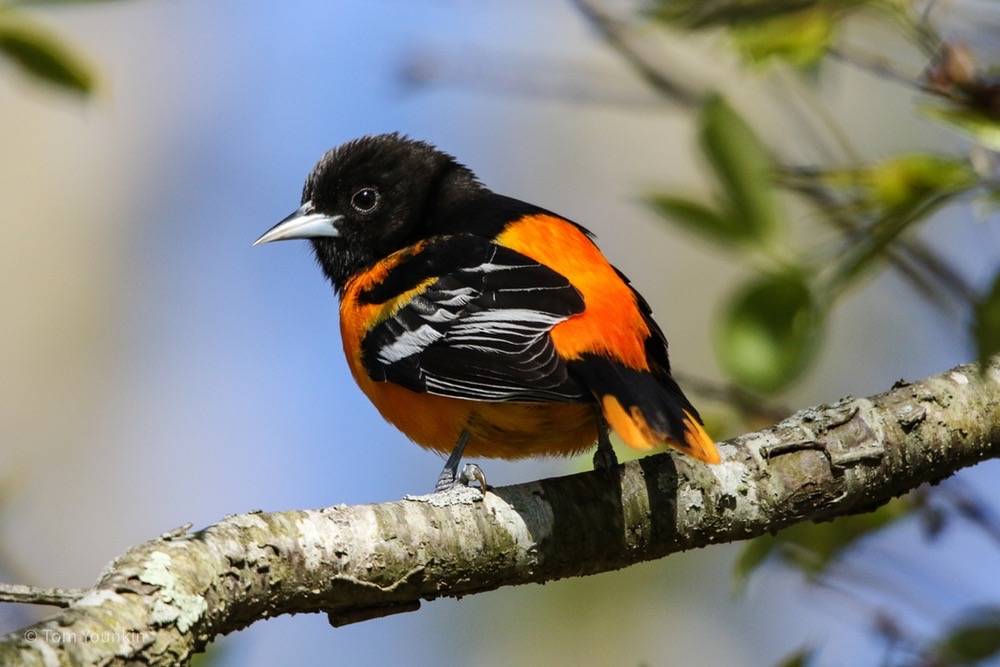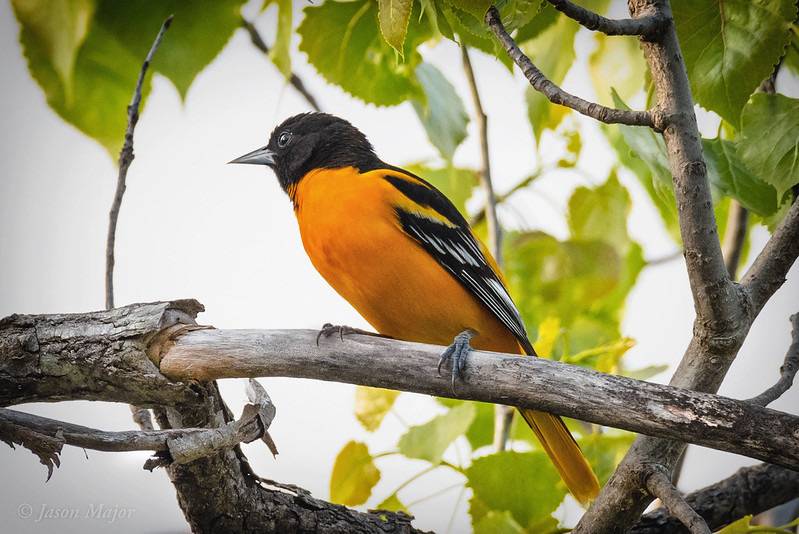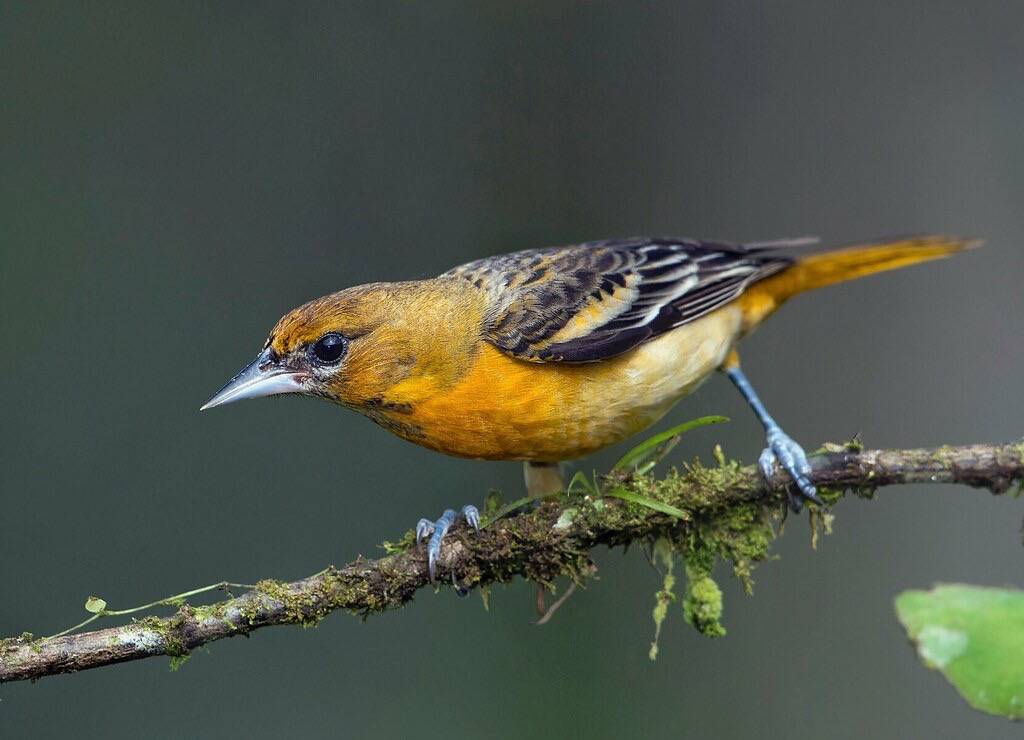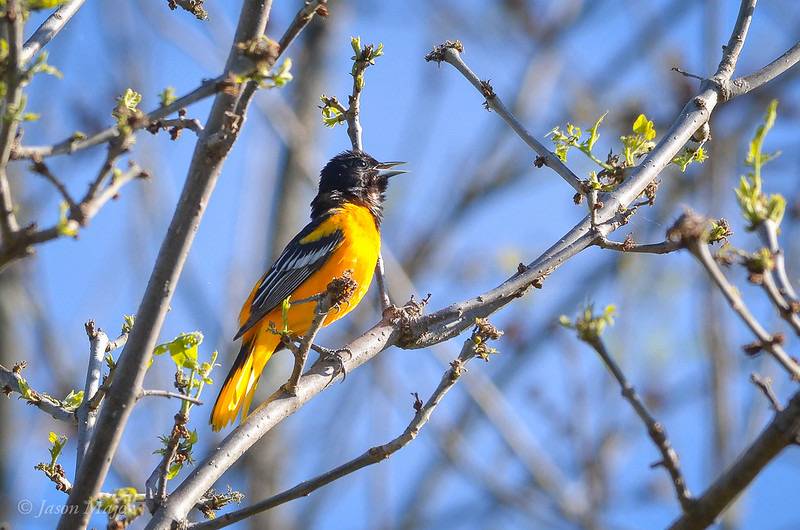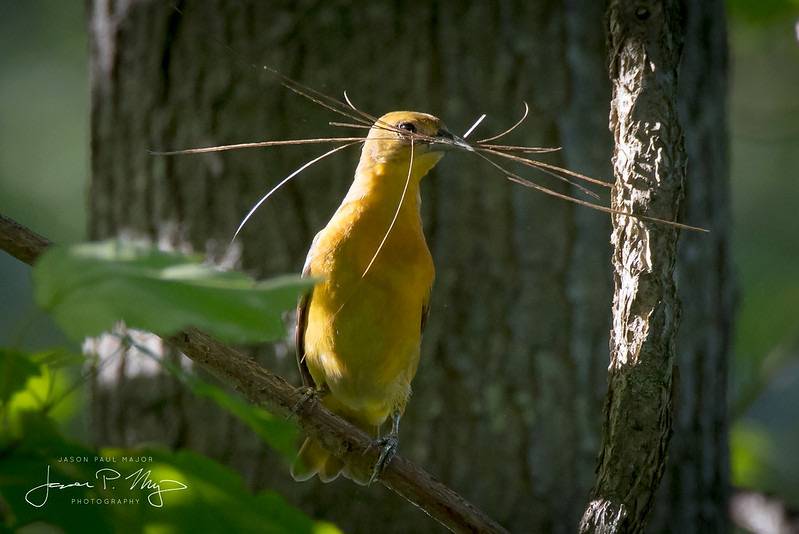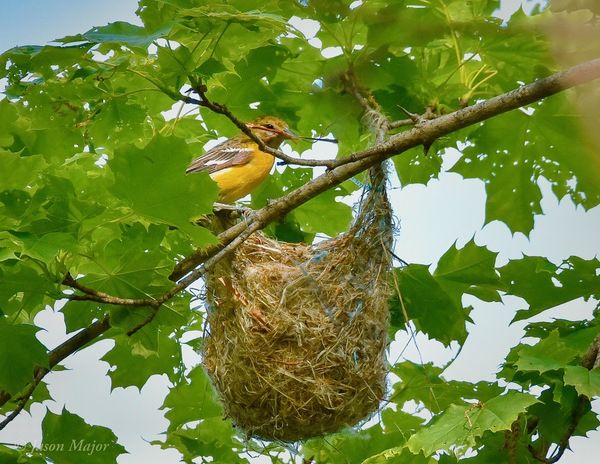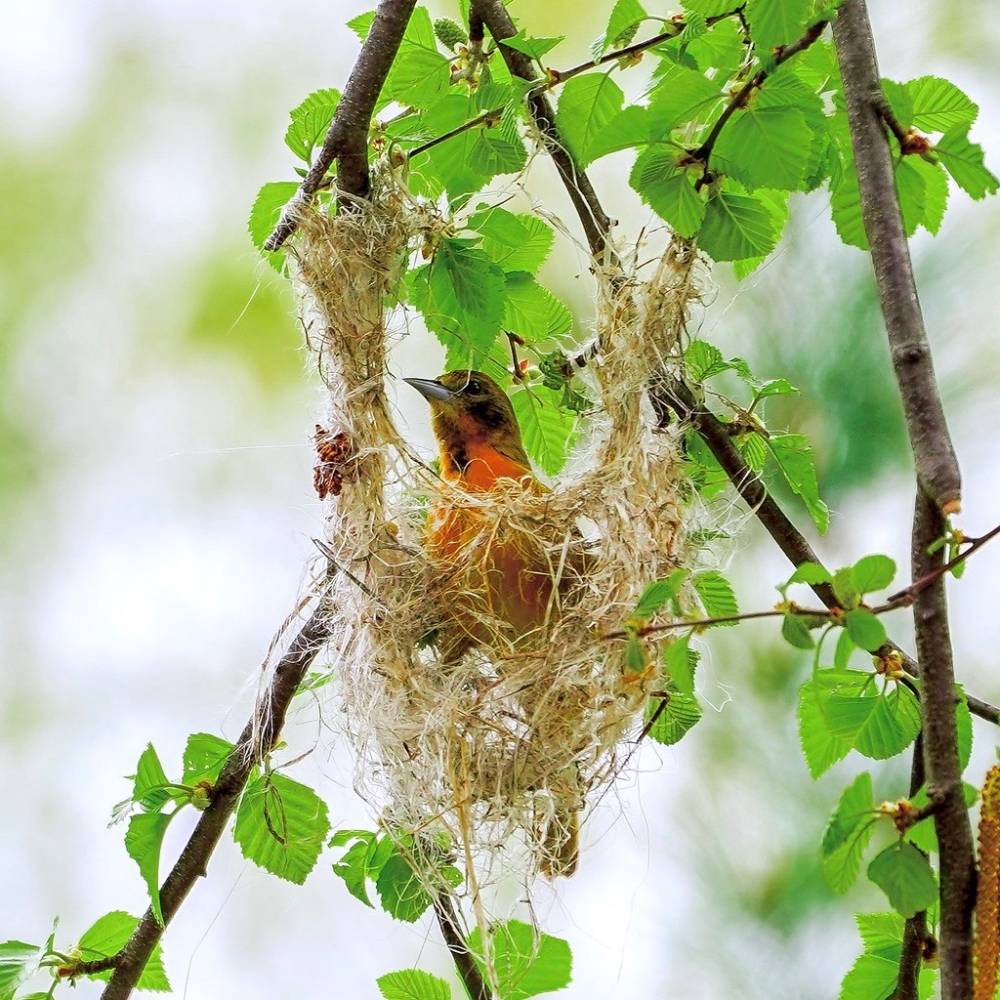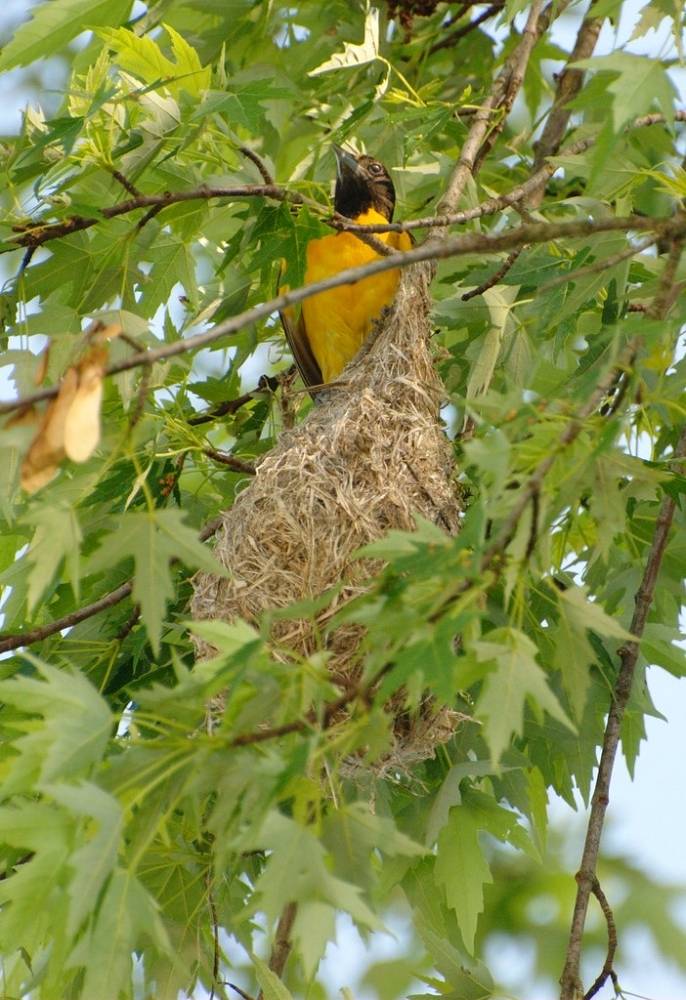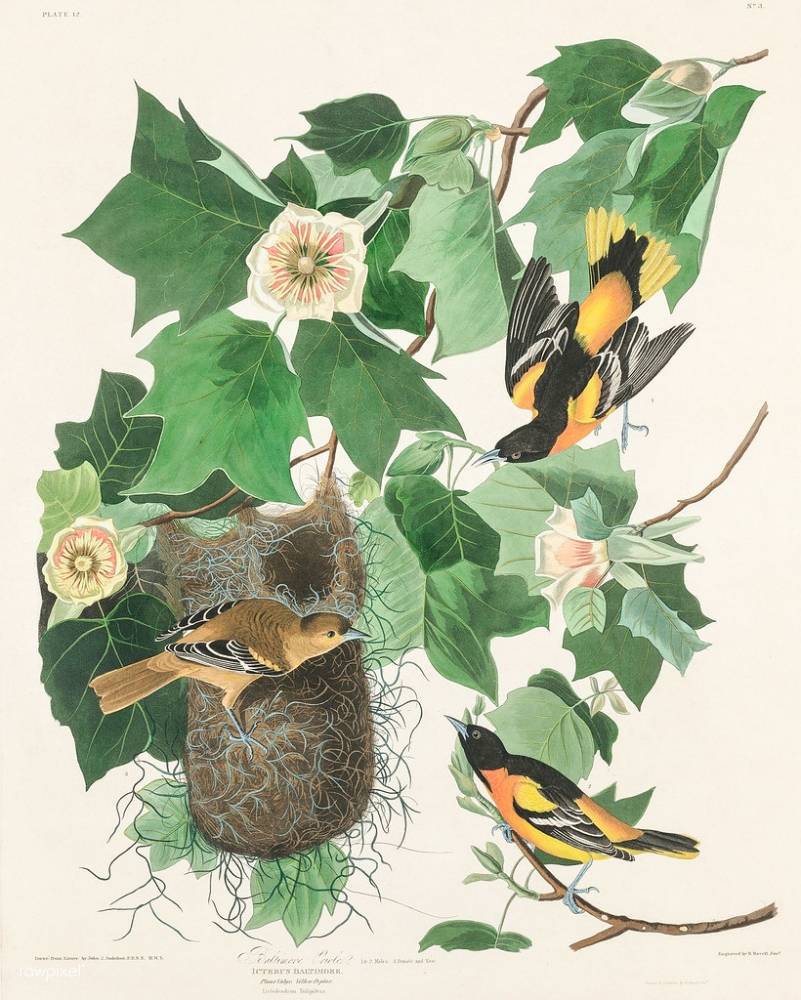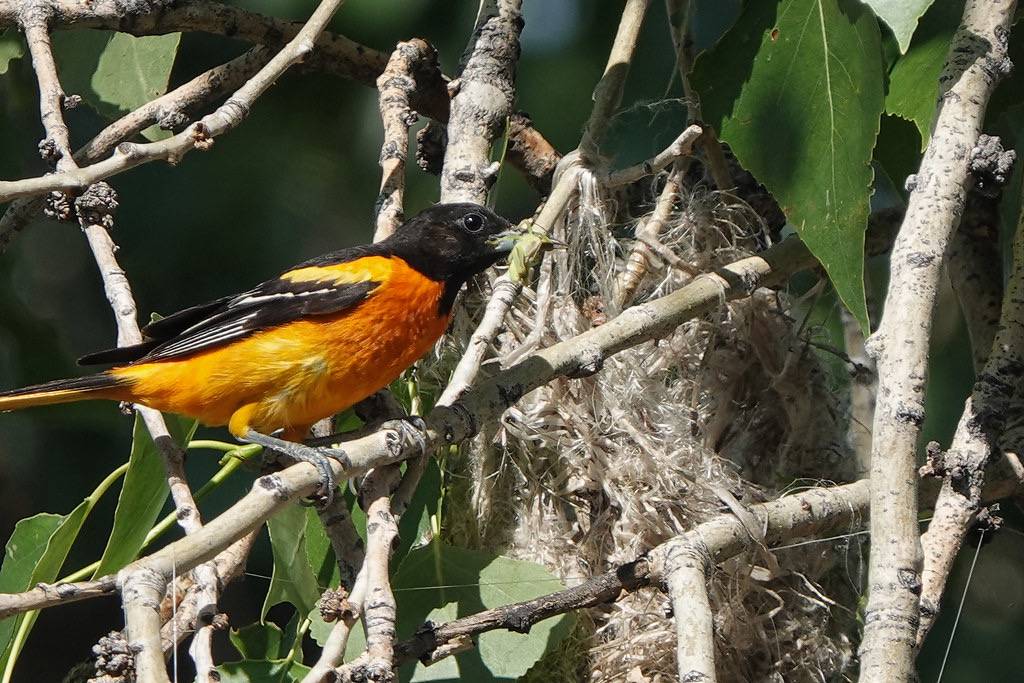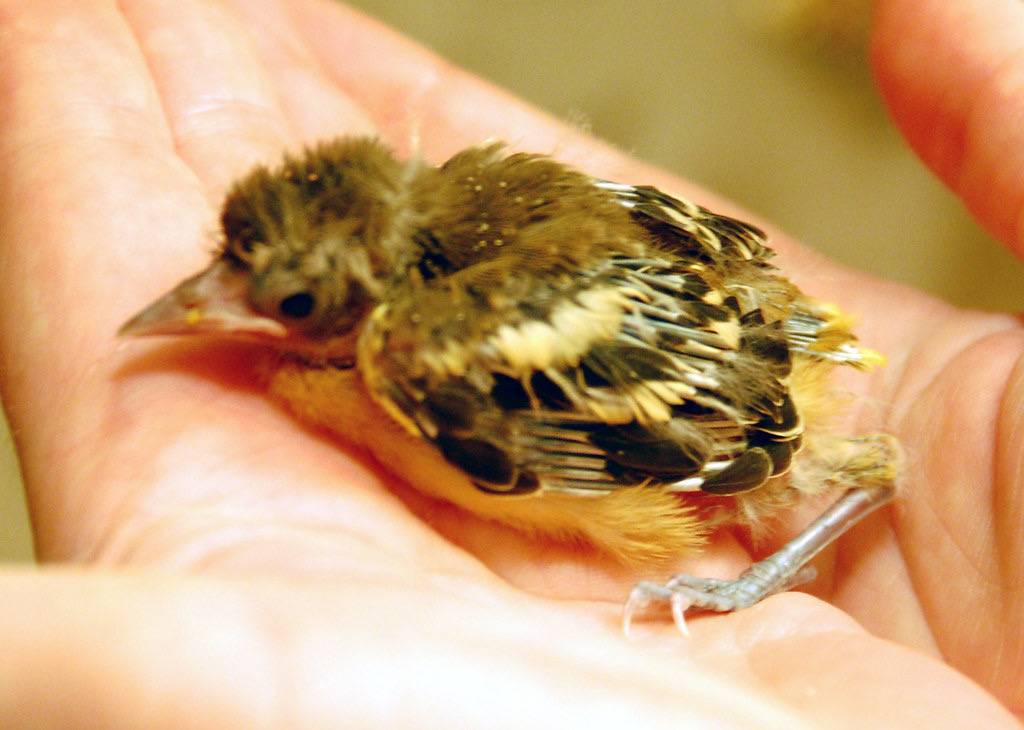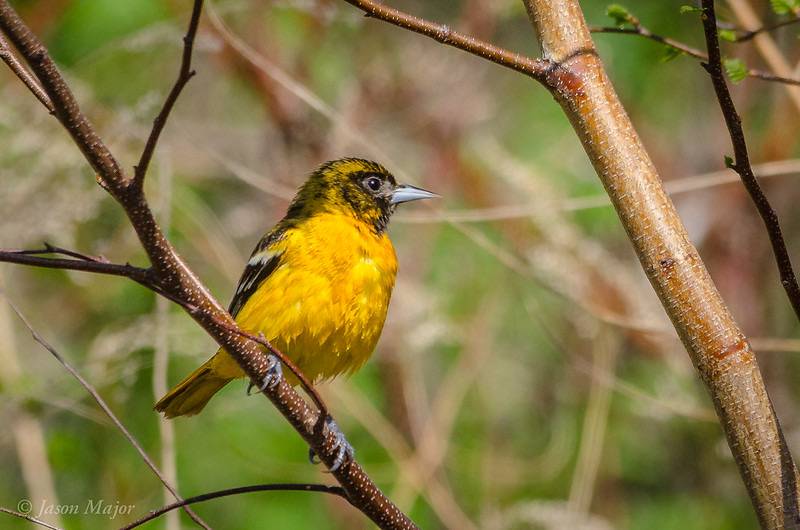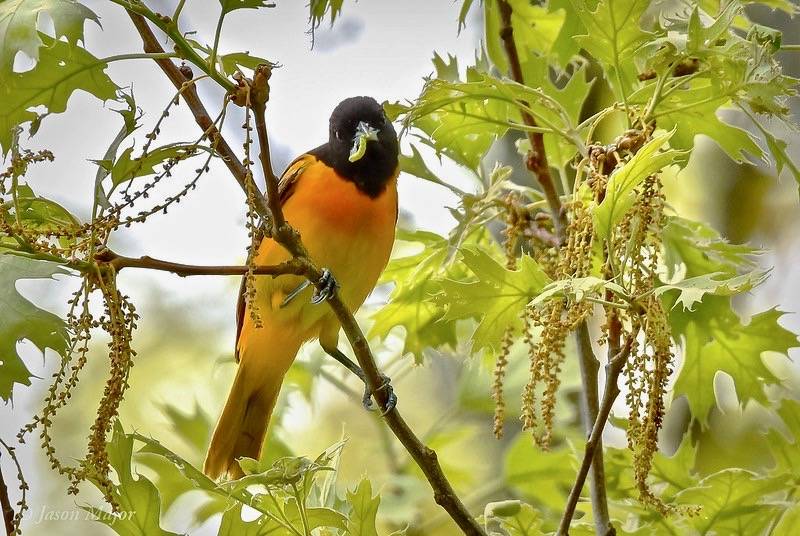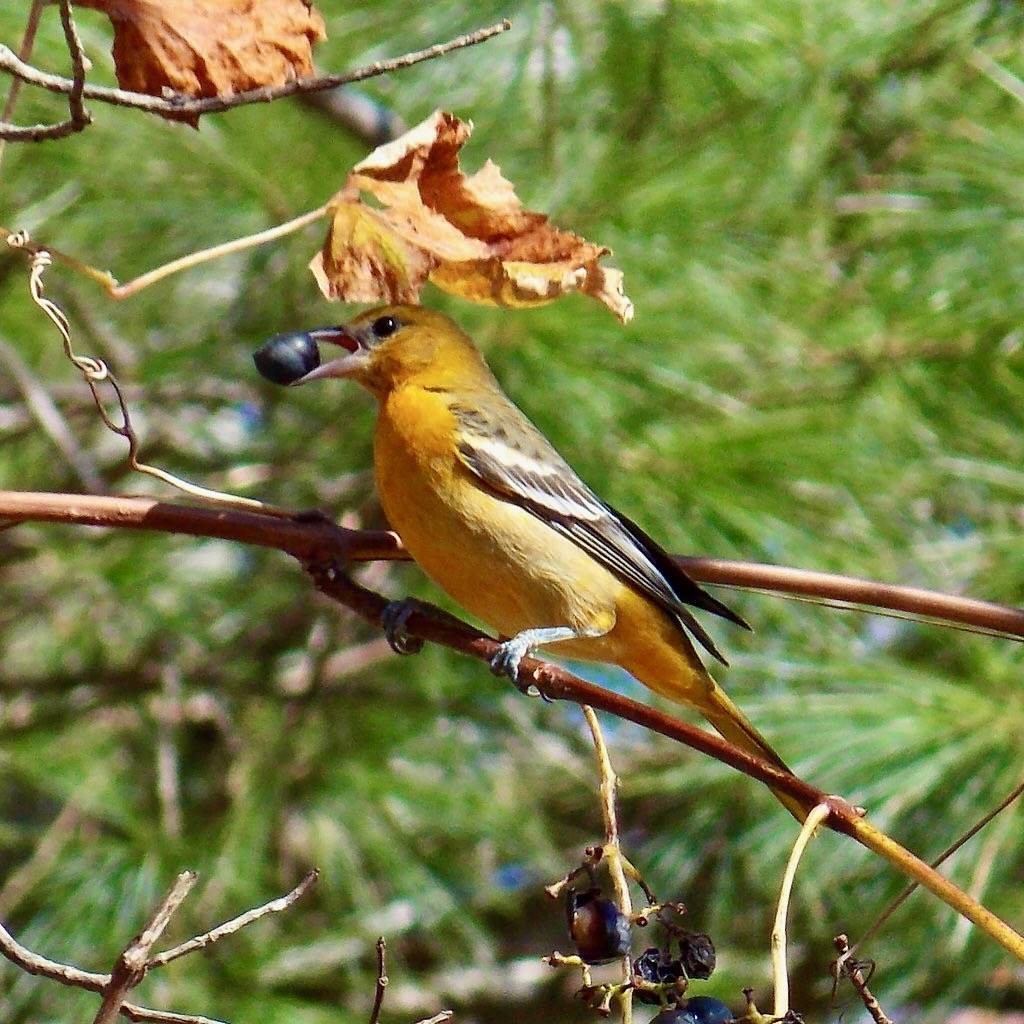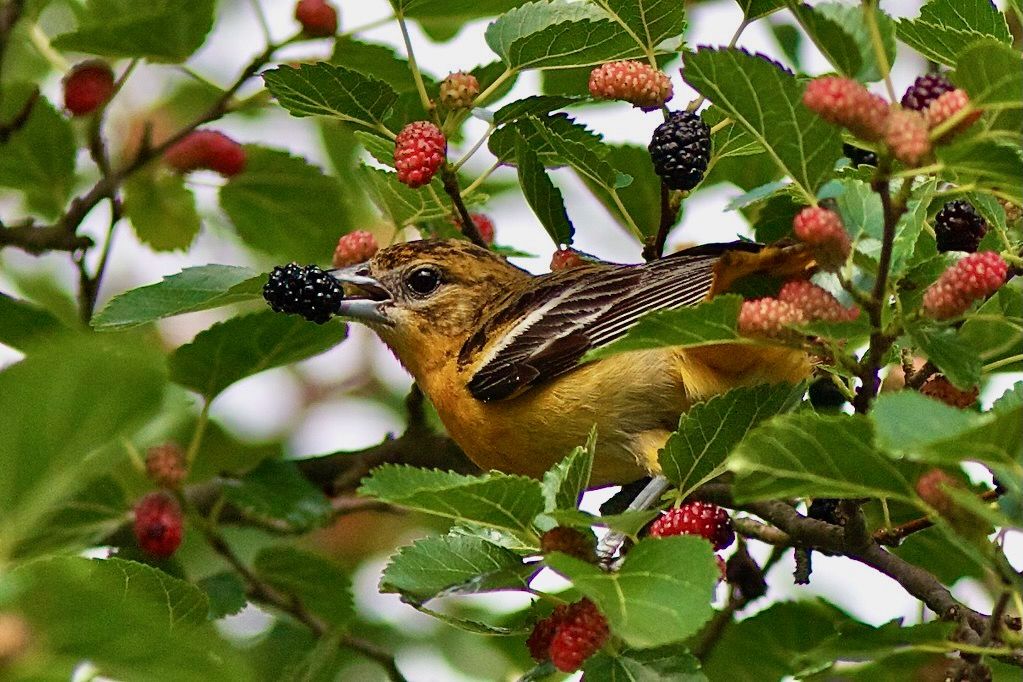Baltimore Oriole
Male Baltimore Orioles can be heard and seen at Salter Grove as they alternate between singing and foraging in tree foliage along the Upland Trail from May through mid-August. Likely locations in early to mid-spring include the cultivated apple tree just north of the entry point to the causeway, or at any profusely flowering crabapple tree throughout the park. Nests have been built in the crown of the tall Tuliptree north of the playground as well as in other tall trees on the western slope of Audubon Trail.
The Baltimore Oriole breeds in open woodland or their edges in eastern North America, and has adapted well to the urban landscape. Its striking black and bright creamsicle-orange plumage is actually quite difficult to see when it is perched in sun-dappled foliage. More often than not, the melodious whistle of the bird will lead to its sighting as it seeks nectar from flowering trees
Orioles were known for their preference of suspending their pendulous nests from large American elms. The onslaught of Dutch Elm Disease that reached a peak in the 1970's hugely decimated preferred nest sites and may have contributed to the population decline of orioles in recent decades.
Baltimore orioles are Neotropical migrants that winter in Central America and northern South America. Because their migration southward is triggered by declining food availability, orioles may be encouraged to stay year-round in southern states if they locate suitably provisioned feeders.

